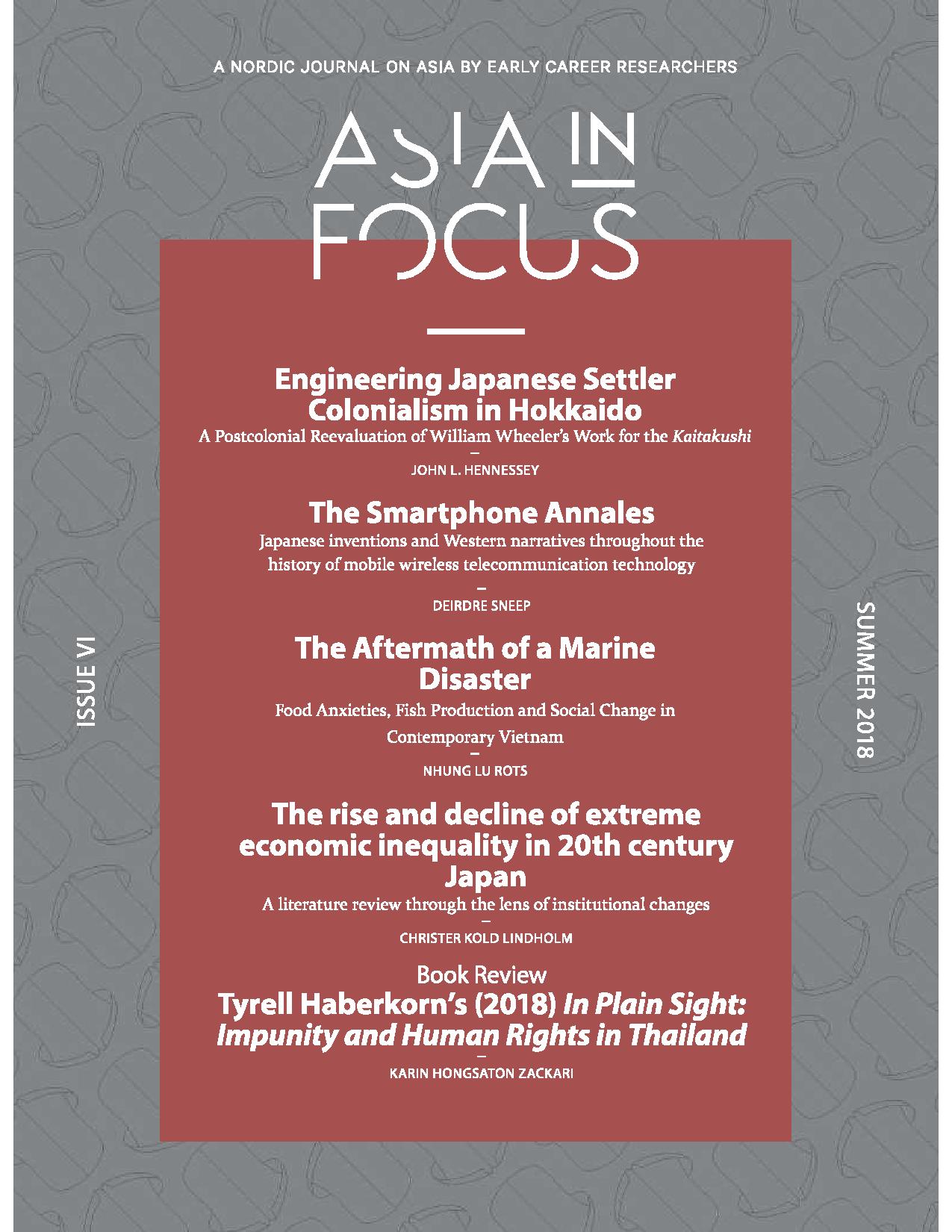Engineering Japanese Settler Colonialism in Hokkaido
A Postcolonial Reevaluation of William Wheeler’s Work for the Kaitakushi
Keywords:
William Wheeler, Sapporo Agricultural College, Hokkaido, settler colonialism, Kaitakushi, oyatoi gaikokujinAbstract
In 1876, the Kaitakushi, the Japanese government agency responsible for the settlement of the northern island of Hokkaido, hired three Americans from Massachusetts Agricultural College: William Smith Clark, William Wheeler and David Pearce Penhallow. Their task was to establish a comparable institution in Hokkaido, Sapporo Agricultural College, that would spread American-style scientific agriculture among new settlers. Although recent historical research has highlighted the colonial nature of the modern settlement of Hokkaido and other American advisors’ role in transmitting modern technologies of settler colonialism, the tenure of these three professors has never been examined from a postcolonial perspective. This article will investigate the writings of engineer William Wheeler, who served as president of the new college for several years and advised the Kaitakushi on numerous infrastructure projects, to look for clues about his attitudes towards and role in Japanese settler colonialism in Hokkaido. Textual evidence reveals Wheeler’s awareness of and complicity in this undertaking.
Downloads
Published
How to Cite
Issue
Section
License
Copyright of the authors and NIAS - Nordic Institute of Asian Studies. All rights reserved. No part of this publication may be reproduced without the written permission from the authors.


